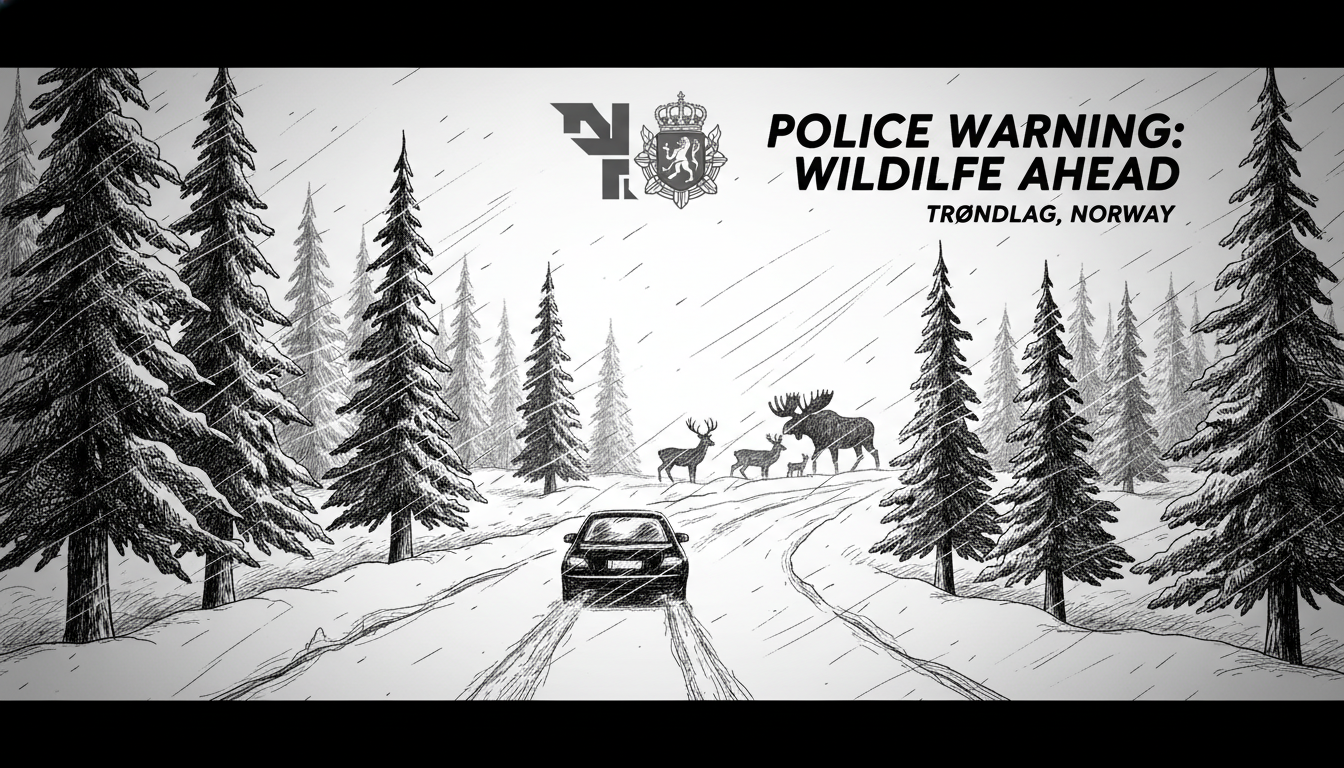Norwegian police report a surge in wildlife collisions across Trøndelag. Heavy snowfall drives animals toward cleared roads where they seek salt and easier travel conditions. Authorities urge motorists to exercise extreme caution in known wildlife crossing zones.
Deep snow accumulation creates dangerous conditions throughout central Norway. Animals naturally migrate to plowed roads for easier movement. They also gravitate toward road salt used for winter maintenance. This combination creates perfect conditions for collisions.
Wildlife-vehicle collisions pose serious risks beyond property damage. They endanger both animal populations and human safety. Moose and deer collisions frequently cause severe vehicle damage and human injuries. These incidents peak during harsh winter months when animal movement patterns change.
Norwegian roads see thousands of wildlife accidents annually. The Trøndelag region experiences particularly high rates due to its dense animal populations and extensive road networks. Local drivers know certain stretches require extra vigilance during dawn and dusk hours when animals are most active.
Police recommendations go beyond simple caution. They advise reducing speed in marked wildlife areas. Using high beams when possible increases visibility. Scanning roadside areas proactively helps spot animals before they enter traffic. These measures become critical during Norway's limited daylight winter hours.
Road safety experts note that wildlife warning signs indicate genuine high-risk zones. Norway invests substantially in wildlife crossing structures and warning systems. Still, driver awareness remains the primary defense against collisions. The economic impact of these accidents costs millions annually in vehicle repairs and medical expenses.
This seasonal pattern repeats throughout Scandinavia. Sweden and Finland face similar challenges during harsh winters. Nordic countries continue developing innovative solutions like animal detection systems and specialized fencing. For now, heightened driver attention provides the most immediate protection.
International visitors driving in Norway should note these warnings. Rental car companies typically provide information about regional wildlife hazards. Comprehensive insurance becomes particularly important during winter months when collision risks increase substantially. Understanding local driving conditions helps prevent accidents.

